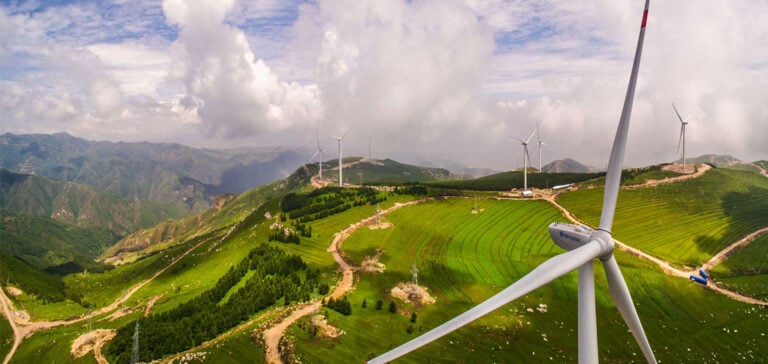China continues to dominate the renewable energy sector, with massive deployment of its solar and wind infrastructure. A study by Global Energy Monitor (GEM) reveals that the country is currently installing 180 gigawatts (GW) of solar power and 159 GW of wind power, representing 64% of new capacity under construction worldwide. Hydropower is also being promoted in China, helping to reduce dependence on coal.
Leadership in renewable energies
With a population of 1.4 billion and a leading role in global manufacturing, China is also the world’s largest emitter of greenhouse gases. In response, the country has pledged to stabilize its emissions by 2030 and achieve carbon neutrality by 2060. China is currently developing its renewable capacities aggressively, putting it well ahead of other nations in this field.
According to GEM, the 339 GW under construction in China is almost double the combined wind and solar capacity of the rest of the world. The country is followed by the USA with 40 GW, Brazil with 13 GW, the UK with 10 GW, and Spain with 9 GW. This dynamic demonstrates China’s proactive approach to its energy commitments.
Coal persistence
Despite this commitment to renewables, China still relies heavily on coal-fired power plants, a highly polluting source of energy. The challenge also lies in transporting renewable energy produced in remote regions to the economic centers of the east. However, GEM predicts that the combined capacity of wind and solar power in China will surpass that of coal this year, a promising sign for future emissions reductions.
A turning future
A separate report from the Finland-based Centre for Research on Energy and Clean Air (Crea) indicates that China issued no new permits for coal-fired steel mill projects in the first half of 2024. This could mark a crucial turning point since the country’s climate commitments were announced in 2020. With demand for steel reaching its peak, China has a significant opportunity to reduce emissions by phasing out coal-based production.
Global warming is accentuating extreme weather phenomena, and China is not spared. This summer, the north of the country experienced intense heat waves, while the south suffered torrential rains leading to flooding and deadly landslides. The transition to renewable energies is therefore becoming not only an environmental necessity, but also an economic and social emergency.
China’s colossal efforts in the field of renewable energies place it in a position of undisputed leadership. This dynamic, if it continues, could have a major impact on the global energy landscape and accelerate the transition to a low-carbon economy.






















